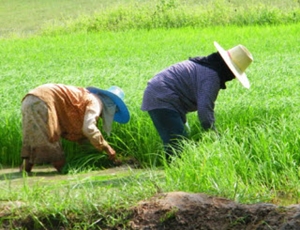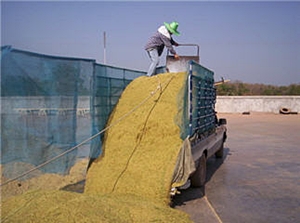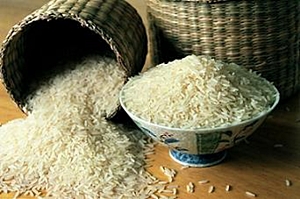BANGKOK, Feb 1 – The international rice trade is forecast to fall by approximately 1 million tonnes, or 5 per cent, this year as improved harvest prospects in several major importing countries may reduce overall demand after achieving a worldwide record of 34.5 million tonnes (milled basis) in 2011, according to the United Nations’ Food and Agriculture Organization (FAO).
The total rice trade should decline to about 32.8 million tonnes. Among the countries expected to import less rice in 2012 are Bangladesh, Indonesia, Nepal, Nigeria and the Philippines.

In Thailand, the recent extension of government-sponsored pledging programme for secondary paddy crops is likely to keep the country’s rice export prices high. As the result, the world’s leading rice exporter is expected to incur a contraction in shipments, as buyers seek better prices from competitors, FAO said in a statement released here on Wednesday.
Supply constraints will probably inhibit exports also from Argentina, Brazil, Myanmar, the United States and Uruguay. Viet Nam, the world’s second-largest rice exporter, may not match its export totals from 2011. Cambodia, China and Pakistan, on the other hand, appear set to increase shipments, while India’s return to the export market, following the lifting of a ban on non-basmati rice exports, should also boost export totals from that country, FAO said.
The good 2011 world production outcome should facilitate an increase in 2012 global rice utilization of 11 million tonnes, or 2 per cent, to 471 million tonnes, but also boost global rice inventories by 10 million tonnes to 151 million tonnes (milled basis), sufficient to cover 32 percent of world utilization in 2012.

Global rice production is expected to set a new record when figures for 2011 are finalized, according to FAO, which raised its forecast for the world harvest by 700 000 tonnes on improved crop prospects in Asia.
Rice production should increase by 21. 4 million tonnes, a 3 per cent increase over the record set in 2010, and total 721 million tonnes (481 million tonnes, milled basis). Improved output from Asia was the key driver in the higher forecast.
Despite rising input prices and numerous weather setbacks – most notably widespread flooding in Southeast Asia during the second half of 2011 – total paddy production in Asia is now forecast at 653 million tonnes, also 3 percent higher than 2010 totals. The figure is 1.5 million tonnes more than the previous forecast issued in November 2011.
Countries in the Asia-Pacific region that registered strong gains over 2010 include Bangladesh, China, India, Pakistan and Viet Nam. However, production was expected to decline in Indonesia, Japan, the Republic of Korea, Myanmar, Sri Lanka and Thailand, much as a result of adverse weather conditions, under the influence of a recurring La Niña, and, in the case of Japan, of the March 2011 tsunami.

Further afield, Africa will probably produce 25.5 million tonnes for a 1 per cent increase over 2010. A recovery in Egypt, and progress in Guinea, Nigeria and Sierra Leone underpinned the improved harvest, even as severe contractions were recorded in Mali and Madagascar. The seasons ended positively in Latin America and the Caribbean, and Oceania. In the other regions, gains were also made in Australia and the Russian Federation, but production fell in the European Union and, especially, in the United States.
International rice export prices have been sliding downward in recent months, with the FAO Rice Price Index dropping by 7 percent since October to 235 points by the end of January. Nonetheless, rice prices were still considered high, as world quotations averaged 10 percent more in 2011 than in 2010.
Fierce competition among exporting countries led to lower quotations. Indica and Fragrant (Jasmine) rice prices were most affected, while prices for Japonica, which had also fallen, recovered in January.
The downward trend in rice prices is expected to persist in coming months as demand continues to weaken, and harvests in northern hemisphere countries and those along and south of the equator add supplies to the market, according to FAO.




